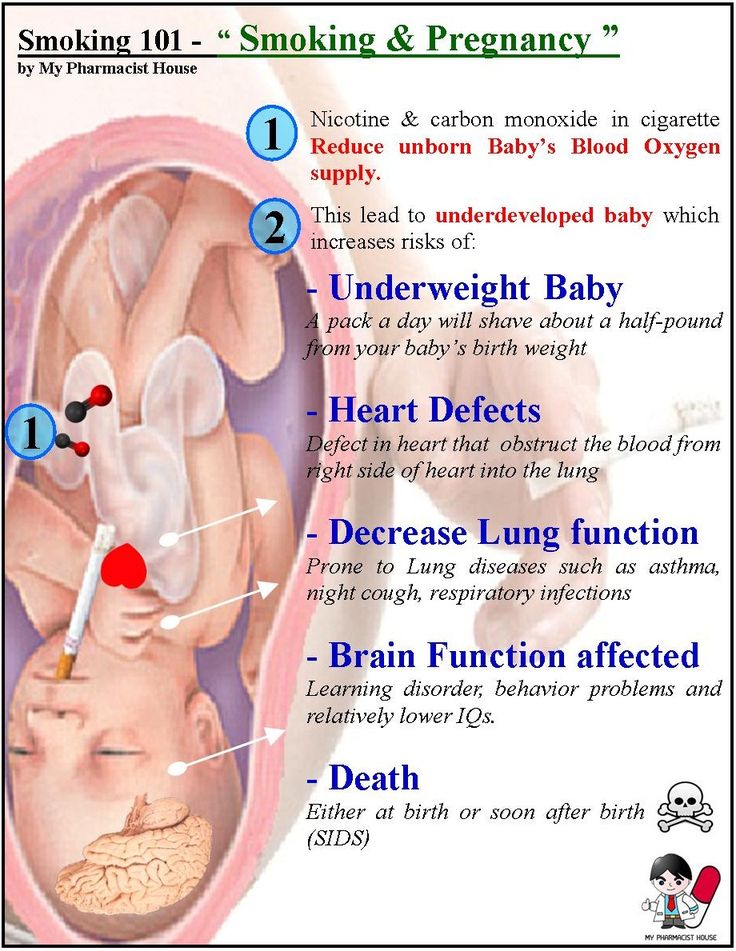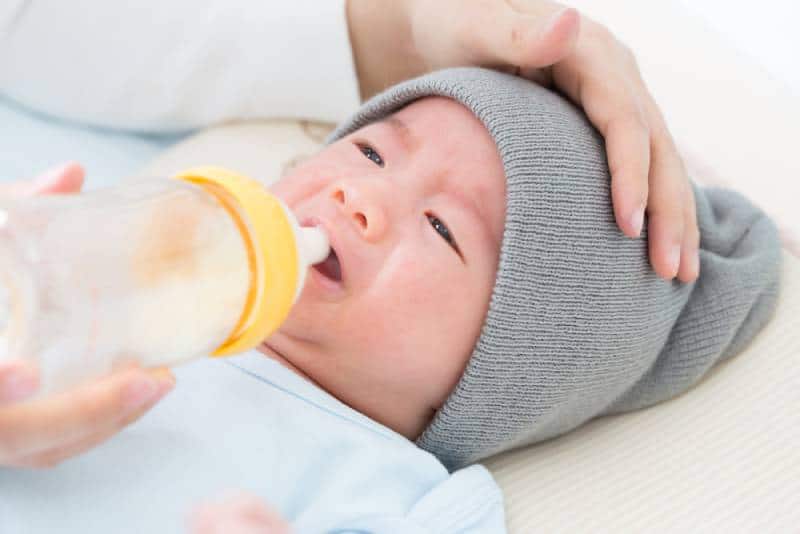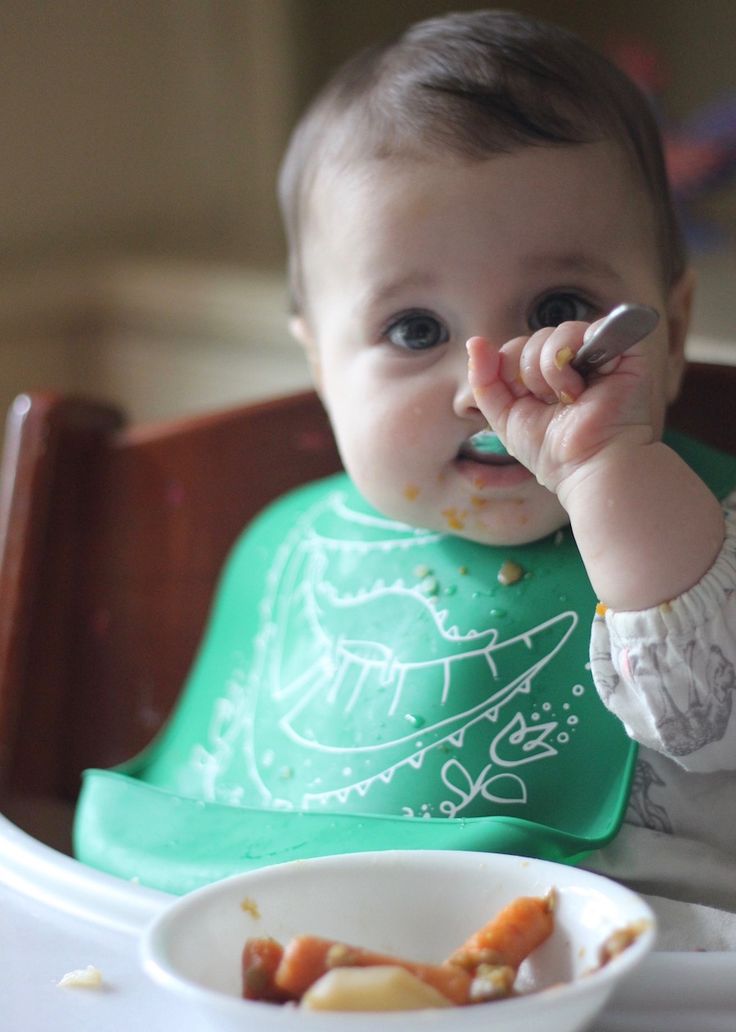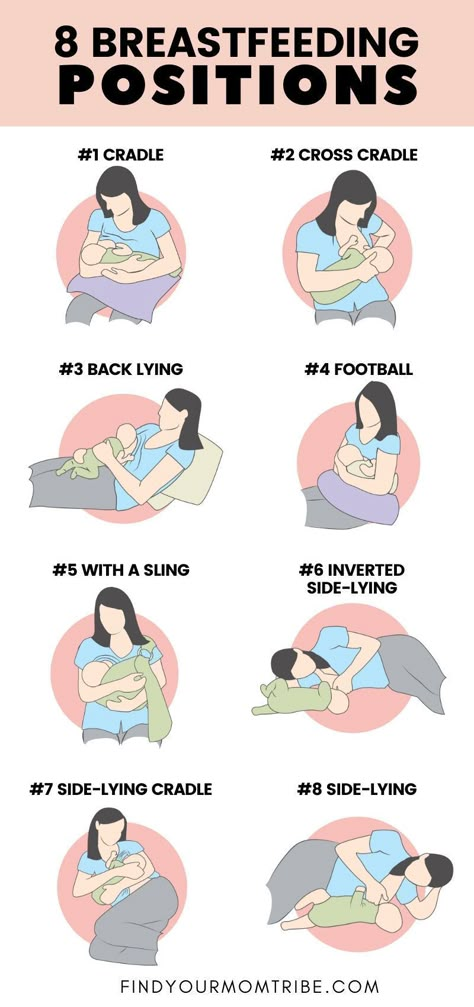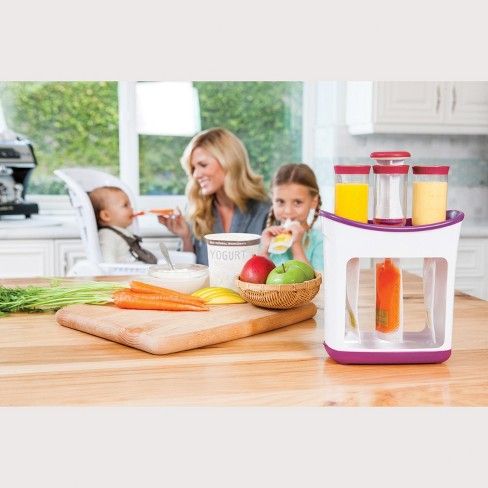Can you feed a 2 month old baby cereal
Is it Unhealthy for a 2-Month-Old Baby to Eat Cereal?
While it might be tempting to give your 2-month-old cereal in the hope she’ll sleep through the night, the American Academy of Pediatrics recommends breastfeeding exclusively for the first six months of life. Babies need to be developmentally and physically ready to start eating solid foods.
If you start your 2-month-old on cereal, you risk some immediate and future health problems. So enjoy the extra middle-of-the-night snuggle time while it lasts.
Digestive Problems
A 2-month-old baby’s tummy is still developing.
Newborns are perfectly capable of digesting breast milk and formula, but their intestines aren't ready to fully handle cereal.
The cereal can move slowly through a baby’s body, which can cause an upset stomach, constipation, gas and pain. You also risk permanently damaging your infant’s digestive tract. By 4 to 6 months of age, a baby’s intestines go through a developmental change that enables them to more easily digest cereal and other solid foods, according to the AskDrSears website.
Risk of Allergies
Should You Put Cereal in a Baby's Bottle?
Learn More
A 2-month-old's intestines aren't mature enough to filter out harmful substances and only let in necessary nutrients.
Immature intestines are more likely to allow potential allergy-causing foods to pass through. Your infant's immune system might produce antibodies to that food, creating a food allergy.
By 4 to 7 months of age, the intestines mature and become more adept at keeping out allergens. Michigan State University School of Nursing recommends waiting until at least 4 months of age to introduce cereal because it lowers your baby’s chance of having a food allergy, particularly if you have a family history of allergies to certain foods.
Choking Hazard
There’s a reason your infant sticks out his tongue when something touches it. Your 2-month-old isn’t physically capable of swallowing until he reaches about 4 months of age -- and until then, the tongue-thrust reflux helps prevent him from choking.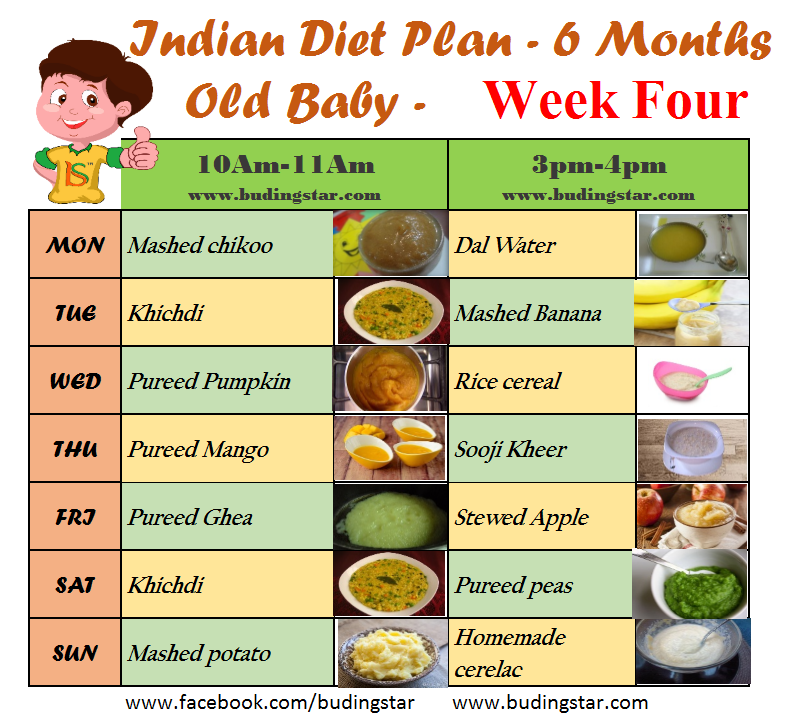
Until this reflex diminishes and your baby is able to move food from the front to the back of his mouth, avoid giving him cereal or any other solid food with a spoon. Your baby should also be able to sit up supported and have full head control before you spoon-feed him solid foods.
Overeating and Obesity
What Are the Dangers of Feeding Baby Cereal to Newborns?
Learn More
A reason not to put cereal in your 2-month-old's bottle is that you may overfeed her as she's not yet adept at knowing when she’s full. She's likely to overeat because her tummy can't tell her brain that she's had enough until she eats too much.
Also keep in mind that by feeding your young infant cereal, you just might be increasing her odds of becoming obese. A study published in the March 2011 issue of “Pediatrics” concluded that introducing solid foods before the age of 4 months is associated with increased odds of obesity at age 3.
When Can You Start Feeding Your Baby Rice Cereal
Adding solid foods to your baby’s diet is a big milestone, and you may be wondering when to begin the process and what foods to start with.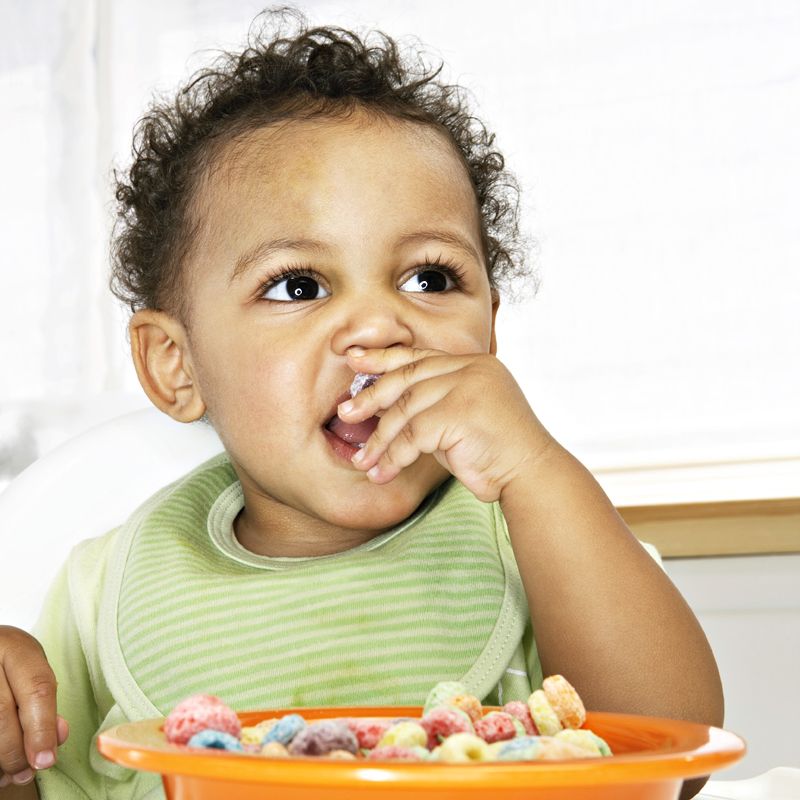 In the past, single grain infant cereals have been the traditional first choice when transitioning to solid foods, with rice cereal being one of the more popular ones. These days, though it is still OK to start with cereal, experts say that there is no evidence that introducing foods in a certain order provides any advantage for your baby (though babies do tend to like cereal).
In the past, single grain infant cereals have been the traditional first choice when transitioning to solid foods, with rice cereal being one of the more popular ones. These days, though it is still OK to start with cereal, experts say that there is no evidence that introducing foods in a certain order provides any advantage for your baby (though babies do tend to like cereal).
Keep in mind that experts highly recommend giving rice cereal as part of a mixed diet of single ingredient choices, rather than as an exclusive food.
Find out how to safely give rice cereal to your baby, and what other infant cereals you might want to give instead.
What Is Rice Cereal?
Rice cereal for babies has been a traditional first food for infants who are being introduced to eating solids. The most common type is a dry powdered cereal, to which liquid is added to form an oatmeal-like consistency, but it can also be purchased premixed. It's one of the single grain cereals that have been recommended for infants when they start on solid foods.
It's one of the single grain cereals that have been recommended for infants when they start on solid foods.
Is Rice Cereal Safe for Your Baby to Eat?
It’s OK to include rice cereal in your baby’s diet as long as you’re not exclusively feeding your baby rice cereal.
The reason experts recommend rice cereal be limited is because of the naturally occurring levels of inorganic arsenic in rice (in this case inorganic refers to the arsenic’s specific chemical compound bound with carbon).
As rice is grown, the plant absorbs more inorganic arsenic from its environment compared to other crops. Arsenic is a naturally occurring element that can enter the food supply through water, soil, or air.
When body weight is considered, a baby’s intake of inorganic arsenic through rice cereal could be three times more than an adult’s. Eating too much rice cereal as an infant can cause long-term health problems.
What Infant Cereals Can You Give Your Baby Instead of Rice Cereal?
Instead of rice cereal, you can offer another single grain infant cereal such as oat or barley cereal. You can find many of these infant cereals in premixed or dry versions to which you would add breast milk, formula, or water to create a consistency that your baby will like.
Look for cereals that are specifically made for babies because they will be fortified with nutrients like iron and zinc that your baby needs.
Just remember that when introducing new foods — including different types of infant cereals — do so gradually, offering one new food at a time, and then waiting a couple of days before adding another food, to watch for any possible allergic reactions. Once your baby has become accustomed to eating solids, feel free to offer a variety of single ingredient, soft foods.
How Many Times a Day Should You Feed Your Baby Infant Cereal?
When your little one is just starting on solids, spoon-feed your baby a small amount of infant cereal once or twice a day, ideally just after he’s been bottle-fed or breastfed. Start with one or two teaspoons of cereal so that your baby can get accustomed to this new food.
Start with one or two teaspoons of cereal so that your baby can get accustomed to this new food.
Eventually you can introduce other foods one at a time—and you can even make your baby’s food at home.
Are Other Rice Products Safe to Give Your Baby?
Not necessarily. You can give rice to your older baby as part of a varied and balanced diet. However, it’s best to avoid certain rice-based products like rice syrup, often used as a sweetener in processed foods, as well as rice milk, which should not be used as a substitute for cow's milk.
If your child has turned 1 and is sensitive or allergic to cow’s milk, your healthcare provider will be able to recommend milk alternatives if needed, and can also weigh in on any rice products you’re considering giving.
At What Age Should You Start Feeding Your Baby Infant Cereals?
For most babies, 6 months is a good age to start to introduce solid foods, which can include infant cereals.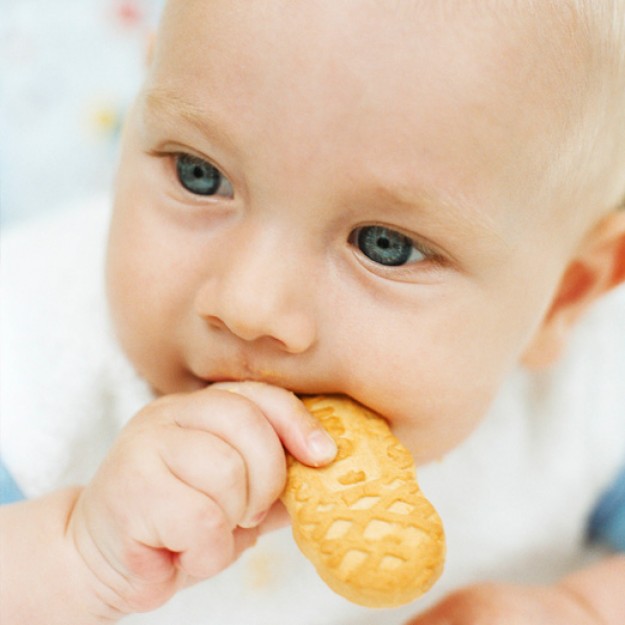 Breast milk or formula will continue to provide most of your baby's nutrition for the first 12 months.
Breast milk or formula will continue to provide most of your baby's nutrition for the first 12 months.
Waiting until this age is important because by this point your baby would have outgrown a natural reflex that all babies are born with that causes them to push their tongue against anything inserted into their mouths. Most babies grow out of this tongue thrust reflex between 4 and 5 months.
Can You Give a Baby Younger Than 6 Months Infant Cereals?
Most babies are not ready for solid foods, including infant cereals, until they are about 6 months old, though some babies could be ready a month or two earlier. Experts recommend that babies be breastfed or bottle-fed (with expressed breast milk or formula until 6 months of age.
How Do You Prepare Dry Infant Cereal for Your Baby?
If you’re using dry cereal, mix one tablespoon of dry cereal with four tablespoons of breast milk, formula, or water; or follow the recommended directions on the container.
Be sure not serve the cereal from a bottle for reasons we mention in the next section. Gradually, you can add less liquid to the dry cereal to find a thickness your baby likes.
Can You Feed Your Baby Cereal in a Bottle?
Although this might be a practice you’ve heard of, don't feed your baby cereal in a bottle unless your baby’s healthcare provider says otherwise. Feeding your baby through a bottle can lead to unnecessary calories—she may consume more food than she actually needs.
Although rice cereal may have been a popular choice, experts now say there are other infant cereals and first foods that may be safer for your baby. If you’re ever unsure about which infant cereal to give, or need advice about expanding your baby's menu, reach out to your baby’s healthcare provider for advice.
As your baby transitions to solid foods, you deserve lots of rewards for all those diaper changes. Download the Pampers Club app to get rewards for all your Pampers purchases.
Download the Pampers Club app to get rewards for all your Pampers purchases.
How we wrote this article The information in this article is based on the expert advice found in trusted medical and government sources, such as the American Academy of Pediatrics and the American College of Obstetricians and Gynecologists. You can find a full list of sources used for this article below. The content on this page should not replace professional medical advice. Always consult medical professionals for full diagnosis and treatment.
Feeding a sick child
Publication date: 12/15/2016 08:22
April 22nd, 2016 Olga.
While the child grows up, he will be ill with various diseases more than once. About 80% is accounted for by SARS. Any disease (we are now talking about the flu, SARS) is characterized by poor health of the child - malaise, cough, runny nose, weakness, and maybe intestinal upset. And all this affects the appetite of the child.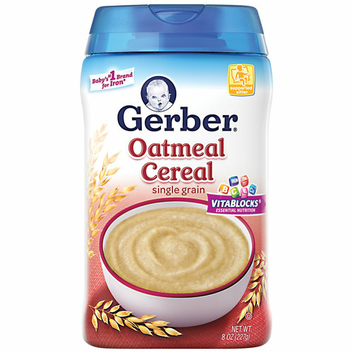 If a child has caught a cold, mothers always ask themselves the question: how to feed him properly? Proper nutrition of a sick child will help to quickly cope with the disease.
If a child has caught a cold, mothers always ask themselves the question: how to feed him properly? Proper nutrition of a sick child will help to quickly cope with the disease.
During an illness, the baby always has a poor appetite. There are physiological reasons for this:
- at elevated temperatures, blood circulation in the stomach slows down. because the body sends blood to vital organs: the heart and lungs. The process of digestion and assimilation of food slows down and the child needs less food than usual;
- during an illness, the liver actively fights toxins, the products of the vital activity of viruses and the decay of damaged cells, so a large amount of food carries an additional burden;
- the toxins themselves poison the body and the child, when he feels bad, not at all before eating;
- blocked nose, sore throat, difficult to swallow.
- Nutrition should be appropriate for the child's age;
- during illness, do not introduce new foods into the diet;
- food should be sparing - liquid or semi-liquid;
- make small meals if the baby does not want to eat, and the number of feedings can be increased;
- if the child refuses to eat, let him drink more fluids (water, compote, fruit drink, rosehip broth).

From the diet during illness should be excluded:
- Hard-to-digest foods - fatty meat, whole grain cereals, fresh vegetables and fruits.
- Foods harmful to the liver - fatty dairy products, chocolate, vegetable oil, lard, confectionery.
- Rough, which can damage the mucous membrane - nuts, seeds, crackers, cookies.
Useful menu
During an illness, a child needs food that is well absorbed by a weakened body. Therefore, chicken broth, vegetable soups, stewed and boiled vegetables are perfect for feeding a child during SARS.
To avoid mechanical irritation of the stomach, choose foods that are low in fiber. What foods are low in fiber? These are potatoes, cauliflower, pumpkin, rice and semolina, animal products.
Potatoes are especially delicate in fiber, so include mashed potatoes in your menu more often. You can cook mashed potatoes with sausage, cheese. Beautifully decorate the dish.
Animal protein must be present in the diet of a sick child, since it is a building material for protective antibodies. They are rich in lean meat - veal, beef, lean pork. For soups, use secondary broths from turkey meat, rabbit, chicken breast.
They are rich in lean meat - veal, beef, lean pork. For soups, use secondary broths from turkey meat, rabbit, chicken breast.
What else can you feed a child during illness? Yogurt helps out well, especially homemade, with the addition of berries.
Cook porridge for the child: semolina, oatmeal, you can also add berries from jam or defrosted.
A sick child needs vitamins. You can make vitamin drinks from rose hips, berries, cook jelly, dried fruit compote, berry juice. . Such drinks will alleviate the condition of the baby if the throat hurts. But with indigestion, milk should not be given at all.
To increase the appetite of the dish, it is desirable to arrange it beautifully so that the child immediately has a desire to eat it.
Nutrition for a convalescent child
After an acute period of illness, a period of convalescence begins, when the baby is on the mend and nutrition during this period plays an important role. The food of a recovering baby should be rich in energy in order to restore strength, contain minerals and vitamins, the food should be well absorbed.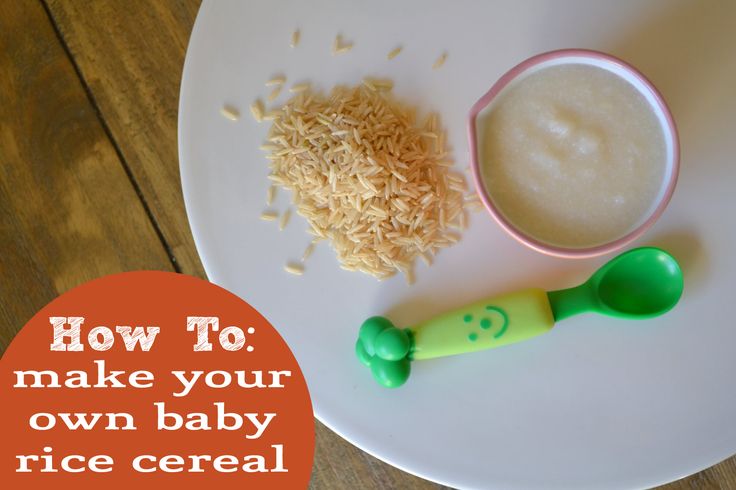
As soon as the symptoms of the disease subside, do not rush to pounce on a child with enhanced nutrition, it will take a few more days to restore digestion. Continue to follow the diet, adding lean meat and fish, cheese, eggs, boiled vegetables and fruits to it.
Ideal for casseroles, puddings, steamed cutlets, vegetable soups. Introduce fruits and vegetables into the diet and do not forget about sour-milk products that will help restore the disturbed intestinal microflora. Let during this period the food be fractional, the child eat a little. And when the body gets stronger, the child will return to a normal diet.
Choosing tactics
When feeding a sick child, parents should remember that it is impossible to force-feed a child!
We provide a diet with easily digestible products. Some parents find it difficult to feed the baby during illness, he categorically refuses to eat. Psychologists advise not to turn feeding into a circus with musical numbers so that the child eats "well, at least one spoonful. "
"
If a child refuses to eat once, it will not bring much harm to health. He will not remain hungry, but will ask for something anyway when his appetite wakes up.
And don't scold the baby if he doesn't want to eat. Appetite will be restored.
Information from the website: deti-i-vnuki.ru/pitanie-bolnogo-rebenka/
what not to feed the child on a regular basis
Vika Vishnyakova
nutritionist
Author profile
”, “fortified with vitamins”, “promotes growth” make you think that this is the ideal food for children.
And if we want a child to be healthy and develop normally, then it is better to buy products from the shelves of children's stores, and in restaurants and cafes choose food from the children's menu. But in most cases, it's all just marketing.
We understand that it can be difficult to feed a child broccoli and healthy white fish, and if he only asks for corn flakes for breakfast, then it is easier for him to give them and avoid tantrums. This does not make you a bad parent.
This does not make you a bad parent.
I'll tell you why "baby" products can be dangerous.
Go see a doctor
Our articles are written with love for evidence-based medicine. We refer to authoritative sources and go to doctors with a good reputation for comments. But remember: the responsibility for your health lies with you and your doctor. We don't write prescriptions, we make recommendations. Relying on our point of view or not is up to you.
Cereals and corn flakes
Even if cereals contain iron, they make the child smart and active, do not overdo it.
Breakfast products advertised for children contain 3 times more sugar than those advertised for adults: Spanish study
They are actually high in sugar and low in nutrients. This can lead to an unbalanced menu, when there are few macro and microelements important for the development and maintenance of health, and a lot of calories, sugar and salt.
For example, a 30-gram serving of Nestlé breakfast cereal contains about 14 g of sugar.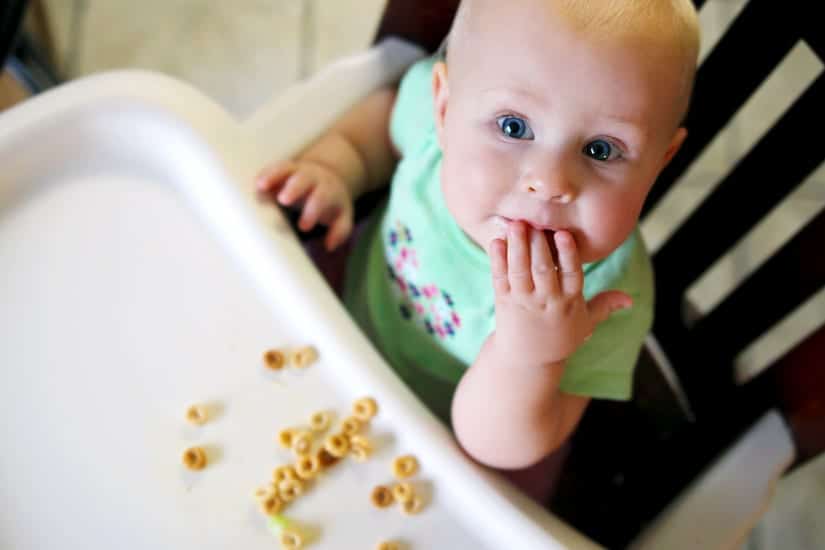 Most often, we do not measure portions with the help of scales, but pour "by eye" - there can be more sugar. For a preschooler, this amount of sugar is the daily norm.
Most often, we do not measure portions with the help of scales, but pour "by eye" - there can be more sugar. For a preschooler, this amount of sugar is the daily norm.
This limit includes all added sugars in any form and with any name. Corn syrup, dextrose, coconut sugar, honey, Jerusalem artichoke syrup and agave nectar are also free sugars that WHO recommends limiting in the diet.
How to calculate sugar in foods: 61 sugars
Allowable amount of free sugars in a child's diet
| Age | How much sugar can you have per day |
|---|---|
| 4-6 years | 19 g or 5 teaspoons |
| 7-10 years | 24 g or 6 teaspoons |
| over 11 years old | 30 g or 7 teaspoons |
Age
How much sugar is possible per day
4-6 years
19 g, or 5 teaspoons
7-10 years
24 g, or 6 teaspoons
older
30 g or 7 teaspoons
The WHO and the American Heart Association recommend eliminating all added sugar up to 2 years and the UK Department of Health up to 4 years.
Breakfast alone can contain a daily amount of sugar, but in addition to breakfast, there are other meals, inconspicuous snacks, desserts and juice. It turns out to be an overkill.
If you regularly exceed the sugar norm, this can lead to unpleasant consequences:
- overweight;
- type 2 diabetes mellitus;
- cardiovascular diseases;
- caries;
- nutrients will be less absorbed.
And the passion for sugar changes the perception of tastes: the usual kiwi or peach seems not sweet enough, and sugary biscuits are just right. This can force other foods out of the diet.
All the health benefits of breakfast cereals are in the flour from which the balls or pillows are made. That is, ordinary cereals were cleaned of the shell - the most valuable element of the grain, ground into flour, added sugar in several forms, butter, starch and additional ingredients to improve taste and texture. To compensate for the loss of vitamins and trace elements that were removed along with the grain shell, the product can be enriched with vitamins and minerals. But this is not always done.
To compensate for the loss of vitamins and trace elements that were removed along with the grain shell, the product can be enriched with vitamins and minerals. But this is not always done.
/list/norm-menu/
The main thing is variety: a ready-made menu for the average Russian
If we gave children ordinary cereals, then there would be more fiber - food for beneficial bacteria in the intestines, the very vitamin B with which the manufacturer promised to increase the ingenuity of consumers, others important trace elements and there would be no added sugar.
Juices
The Russian Union of Pediatricians notes that juices contain few vitamins and minerals, but a lot of sugar, so they should not be offered before 12 months. The habit of drinking juices can increase the risk of tooth decay and obesity.
The WHO, European and American Societies of Pediatrics do not recommend giving free sugars to children under 2 years of age. And juice is one of their forms. If fiber is removed from the product, but only juice or its concentrate is left, then the product goes into the section of free sugars - “free” from fiber. That is, any juice - even marked "without sugar" - is still a variant of sugar.
And juice is one of their forms. If fiber is removed from the product, but only juice or its concentrate is left, then the product goes into the section of free sugars - “free” from fiber. That is, any juice - even marked "without sugar" - is still a variant of sugar.
Whole fruits should not be limited in the diet: it is almost impossible to get an excess of sugars from them, but from juices it is easy. For example, it takes me four oranges to make a glass of freshly squeezed juice. A child will drink such a glass in one minute and ask for more. But if I cut these four oranges, he will manage two at best. At the same time, the child will receive fiber, vitamins, minerals and a bonus in the form of training the jaw apparatus.
A glass of freshly squeezed juice may be in the diet of a child over 7 years of age. Until this age, pediatric organizations recommend giving juices occasionally and diluting with water in a ratio of 1:1.
Unicef - what to feed a baby up to 1 year old
A package of baby juice can contain up to 6 tablespoons of free sugars, absolutely no fiber and a dubious amount of vitamins, because almost all of them are destroyed during the production process. And a whole apple contains 5 g of fiber - that's 20% of the daily value for adults, 9mg magnesium and 0 g free sugars.
And a whole apple contains 5 g of fiber - that's 20% of the daily value for adults, 9mg magnesium and 0 g free sugars.
The link between juice consumption and excess weight: Harvard Medical School
Dairy products for children
By itself, milk, kefir and fermented baked milk are essential foods in the diet. From them, children get calcium, protein, various microelements, and from fermented milk products they also get beneficial bacteria.
But now, baby dairy products are not always a good option, despite the labels "from 6 months" on the packages. The point here is not in the milk itself and its derivatives, but again in exceeding the safe norms of sugar with the regular use of such products.
Nutrition for children aged 1-3 years: guidelines from the Union of Pediatricians of Russia
Dairy guidelines: American Pediatric Association
WHO recommends 2-3 servings of dairy products per day: each serving is the size of a child's fist.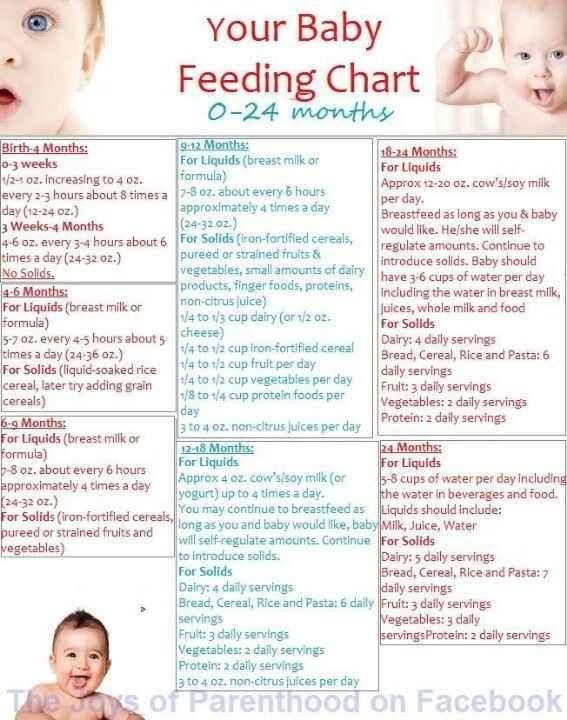 For example, it can be 100 ml of kefir or a jar of non-drinkable yogurt 120 g.
For example, it can be 100 ml of kefir or a jar of non-drinkable yogurt 120 g.
But if you put 1-3 teaspoons of sugar in each of them, as manufacturers of children's yogurts do, you get a search for the norm of sugars with all the ensuing consequences for health . In addition, we can form the wrong taste preferences: after the “strawberry flavored” option, ordinary fermented baked milk may seem insipid to the child and he will refuse it. Therefore, it will be more useful to give ryazhenka without additives and put a couple of berries in it for taste.
"Children's menu" in restaurants and cafes
Most often, the children's menu offers french fries, sausages, nuggets and dumplings. It seems that this is a variant of a normal lunch for children.
Almost all of these products are ultra-processed. That is, those in which there are almost no nutrients, but there are a large number of flavor enhancers and preservatives: salt, sugar and fats. Yes, they affect our receptors and such food seems tasty, but there is very little nutritional value in it.
There is a connection between the regular consumption of ultra-processed food and lipid metabolism disorders in children. In the future, this can lead to atherosclerosis and an increased risk of cardiovascular disease. And also to an imbalance in nutrition, metabolic disorders and obesity.
Study on the association of frequent consumption of fast food and obesity in children
Scientific review on the impact of fast food on children's health
Ultra-processed foods can be included in the diet of adults and children, but as an addition to the main balanced diet, not as a replacement for it.
If you feed this food every day, then the children form the idea that this is a normal food option. Then why eat broccoli and shrimp on another day? Food with an adequate level of nutritional value can be forced out of the diet, and this is fraught with a deficiency of essential substances.
Therefore, when looking at the menu with your child, it is important to draw his attention to the fact that nuggets and fries are more of an addition to the main course, and if you need to satisfy your hunger, then it is better to choose alternatives with a higher nutritional value. And be prepared for the question "If this is not children's food, then why is it on the children's menu?".
/list/free-for-kids/
Going to a cafe with your family and not going broke: 7 places in Moscow with a free children's menu child, because it is sold in a pharmacy. It is also much healthier than candy because it contains iron. The same applies to ascorbic acid in dragee format: vitamin C in a "candy" package is just a godsend for parents who want to strengthen their child's immunity.
A 50g hematogen bar contains about 5g of iron and 30-40g of sugar. For comparison: the same amount of iron in 25 g of stewed liver, 30 g of sesame seeds, 12 tablespoons of boiled lentils or 150 g of beef steak. Moreover, these products do not contain added sugar.
Moreover, these products do not contain added sugar.
One dragee of ascorbic acid weighing 2.9 g contains 2.8 g of sugar, and ascorbic acid itself is only 25 mg - 112 times less than sugar. The same amount can be obtained from 50 g of bell pepper or half a kiwi.
If you do not live in conditions of total food shortage, then the child does not need either hematogen or ascorbic acid. They may be optional, as a dessert, but not as a necessary means to maintain health.
/list/healthy-eating-myths/
No Sugar or Carbs: 6 Healthy Eating Myths
Bottom Line
- Baby food is not a set of products with cartoon characters on the packaging and the words “from 6 months”.
- Children's diet is the usual food groups: vegetables, fruits, cereals, dairy products, sources of protein and moderate amounts of fats, among which unsaturated fats are preferred. Minimum salt, moderate amount of sugar.
- Products targeted at children often contain too many free sugars, but this is not always clear from looking at the front of the package.


